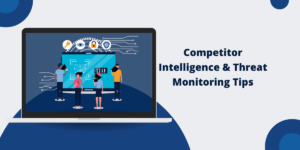Stakeholder analysis is a big deal when it comes to managing projects, shaping business strategies, or even crafting policies. It’s all about figuring out who’s got a stake in what you’re doing—whether they can sway things or will feel the impact—and getting a handle on what they care about and how much they’re invested. Nail it, and you’ve got smoother projects, happier people, and smarter choices. Mess it up, though, and you’re looking at clashing goals, pushback, or even a total flop.
Thing is, a lot of companies and project managers trip over the same potholes. These slip-ups can sour relationships and throw a wrench in progress. From missing the right people to botching communication, the fallout can get messy. So, let’s break down the usual mistakes and toss in some solutions to keep things on track.
Ignoring Key Stakeholders
One of the worst fumbles is not spotting everyone who matters. Too often, companies zoom in on the obvious players—think clients, bigwigs, or investors—and totally breeze past the less flashy ones like regulators, local communities, or suppliers. Then, surprise! Those overlooked pop up later with gripes or roadblocks that could’ve been avoided.
The fix? Map it out properly from the start. Look into a solid stakeholder analysis example if you need a nudge—it’ll show you how to sort people by how much pull they’ve got and how much they care. Bring everyone into the conversation early, and you’ll dodge surprises while keeping things running smooth.
Misjudging Stakeholder Influence and Interest
Another classic error is misreading how much influence or interest someone really has. You might think a stakeholder’s just chilling in the background, only for them to turn into a powerhouse later. Or maybe you’re sweating over someone who ends up not caring. Get it wrong, and you’re either scrambling to catch up or wasting effort on the wrong crowd.
Here’s the trick: keep your radar on and check in often. Chat with people, see where they’re at, and tweak your approach as things shift. Regular catch-ups or quick feedback loops can clue you in on what’s really going on, so you’re not caught off guard.
Lack of Effective Communication
Then there’s the lack of communication. Some companies blast out the same generic updates to everyone, ignoring that different people like different styles. Others barely check in at all, leaving stakeholders feeling sidelined and grumpy. That’s a fast track to frustration—and a project that’s dead in the water.
What works is a game plan. Figure out who needs to hear what, how often, and how—emails, face-to-face chats, whatever fits. Tailor it to what they’re into, mix up the methods, and you’ll keep everyone in the loop and on board.
Overlooking Internal Stakeholders
A lot of companies get so hung up on the outside crowd—investors, clients, regulators—that they forget the people inside the walls. Employees, team leads, and crew members? They’re the backbone of any project. Ignore their input, and you’ll end up with grumbling, low morale, or things just not getting done right.
Loop them in from day one. Hold some internal huddles, toss out a survey, or just ask what they think. When everyone’s on the same page, things click a lot better.
Treating Stakeholder Analysis as a One-Time Task
Here’s a big myth: stakeholder analysis is something you do once and call it good. Nope. People’s priorities and clout can flip as the world changes—new market trends, company shake-ups, you name it. If you don’t keep tabs, you’ll drift out of sync fast.
Treat it like a living thing. Circle back now and then, tweak your stakeholder map, and stay sharp. That way, you’re always in tune and ready to roll with whatever comes up.
Failing to Address Stakeholder Conflicts
Clashes between stakeholders? They’re gonna happen. Maybe customers want low prices while investors want fat profits. Pretend it’s not there, and you’re begging for trouble—people tune out or bail entirely.
Face it head-on instead. Get everyone talking, step in to smooth things over if needed, and find a way to weigh what matters most. Being upfront about tough calls builds trust and keeps the group from splintering.

Relying on Assumptions Instead of Data
Last one: too many companies guess what stakeholders want instead of actually finding out. Assumptions like that can steer you way off course—like thinking everyone’s happy when they’re secretly fuming.
Get the real scoop. Ask questions, send out a quick poll, or peek at past patterns. Solid info beats gut feelings every time, and it’ll make your next move a whole lot sharper.
Final Thoughts
Stakeholder analysis can make or break a project, but it’s easy to stumble. Skipping key people, misreading the room, or going radio silent can tank things fast. Same goes for treating it like a one-off or betting on hunches over facts.
The good news? You can sidestep all that. Stay on top of it, talk to people the way they like, and tackle issues before they blow up. Do it right, and you’ve got a tighter team, fewer headaches, and a project that actually lands where you want it.

Priya Mervana
 Verified Web Security Experts
Verified Web Security Experts
Priya Mervana is working at SSLInsights.com as a web security expert with over 10 years of experience writing about encryption, SSL certificates, and online privacy. She aims to make complex security topics easily understandable for everyday internet users.



